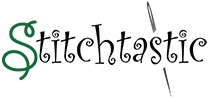New to cross stitch? Don't worry, below you will find an easy guide to following a cross stitch chart which will enable you to complete a beautiful piece of work.
When choosing your first piece of cross stitch, one of the keys is to keep the design simple and not to attempt a huge piece of tapestry until you have had a lot more practice at cross stitching. There are a vast amount of subjects available in kit form today ranging from flowers, animals, all sorts of motorised vehicles to simple figure work, such as angels, small bears or rabbits. A basic heart shape pattern is another kit ideal for the beginner.
Cross stitch charts come in two types and are either black and white symbol charts or colour charts. The material you will use to sew your cross stitch on is called Aida and each square on your cross stitch material represents one sewn cross stitch.
The black and white symbol chart is relatively straightforward as each different colour required for that particular pattern is represented by a different symbol. The black and white chart is always printed clearly with both the outline of the pattern and the symbols well defined. There is always a key to the symbols with the chart.
As an example let's imagine you have chosen a pattern which is quite simple using only two colours and the symbols on our chart are just "+" and "-". When you look at the symbol key underneath the pattern, you will see "+" = Cherry Red 002 and "-" = Sky Blue 122. Not only does each colour of thread have a name but it is also numbered. These identification names and numbers for the thread colours are very important and if you have used all of one particular colour, do not use another shade and number of the same colour as this will probably vary slightly in colour and could spoil the look of the finished cross stitch.
Obviously, the greater the number of colours worked into a pattern, the greater number of different symbols will be shown, both on the chart and in the key to the symbols. Of course, most kits are manufactured and designed in conjunction with the producers of the thread and so colour coding can vary from one thread manufacturer to another. Do use the thread recommended in the kit you are using as if you decide to use thread from another manufacturer, the colours in your completed work may not be the exact match required to finish your pattern satisfactorily.
The thread used to make cross stitch patterns is quite thick. It is usually bought in 8m lenghts called skeins and is made up of six threads. If you purchase a kit, the thread has often been cut to length for you, so that if a pattern requires 1m of a certain thread colour, you don't need to spend money on a skein of 8m and only use one of those metres! Your kit will also advise the number of threads you will need to use to make each cross stitch, usually most patterns instruct you to use 2 threads. The secret is not to cut your thread too long, make each piece about 18" in length as this is a manageable size when separating a skein. Start at the top of the thread carefully easing the six threads into separate threads, then gently pull them apart and you are ready to commence cross stitching. A very popular method of cross stitching involves doubling over the thread, so that you have a loop to begin stitching. This would mean starting with just one thread, doubled so that you are actually stitching with two.
The colour chart is, as its name implies, guided by colour and each cross stitch square is printed in the colour required to complete the pattern on the colour chart. You will find a precise guide to colour name and number at the bottom of the colour chart. Again the same principle applies, keep it simple initially and then advance to more adventurous and larger designs. Also do use the thread supplied or recommended by the producer of the kit as a variance in the shades of colour may alter and spoil the look of the finished pattern.
The kit you choose to begin cross stitching with will include the cloth on which you are going to make your pattern and as mentioned Aida is commonly used. However, and this could be the tricky bit, the number of squares on the cloth determines the size of the finished article as cloth is available with squares of different sizes or counts. The key is the smaller the size of the square or count, the smaller the finished picture will be, that is an identical design worked on different sized squares or counts will not provide an identical picture - the finished sizes will vary. If you choose to work two identical patterns for hanging either side of a chimney breast for example, make sure the cloth on which you are working is the same square count or you will end up with two very different looking pictures of the same subject.
Now you are ready to commence your cross stitch piece and with patience and a little practice you will soon be producing professional looking pieces.
